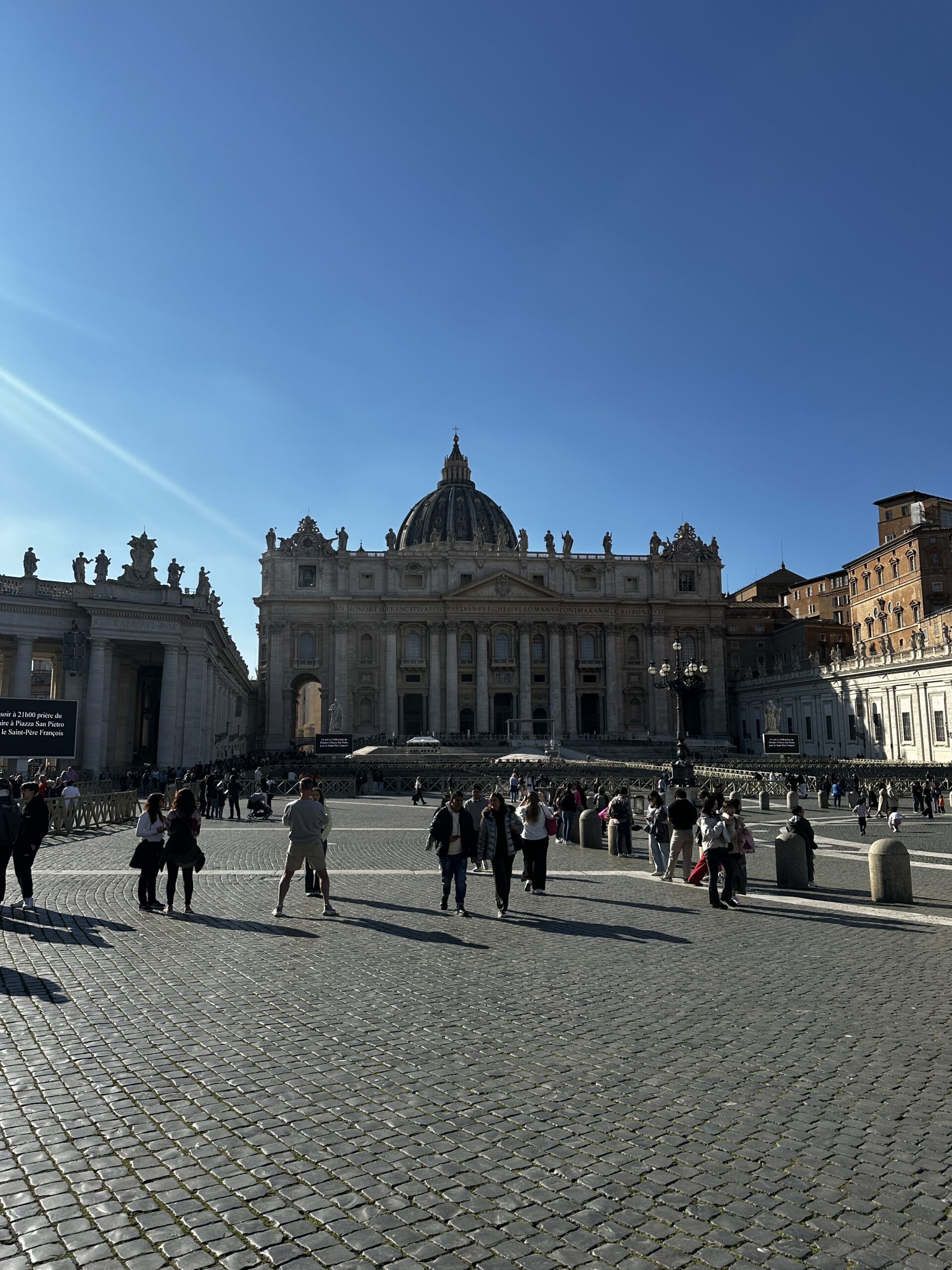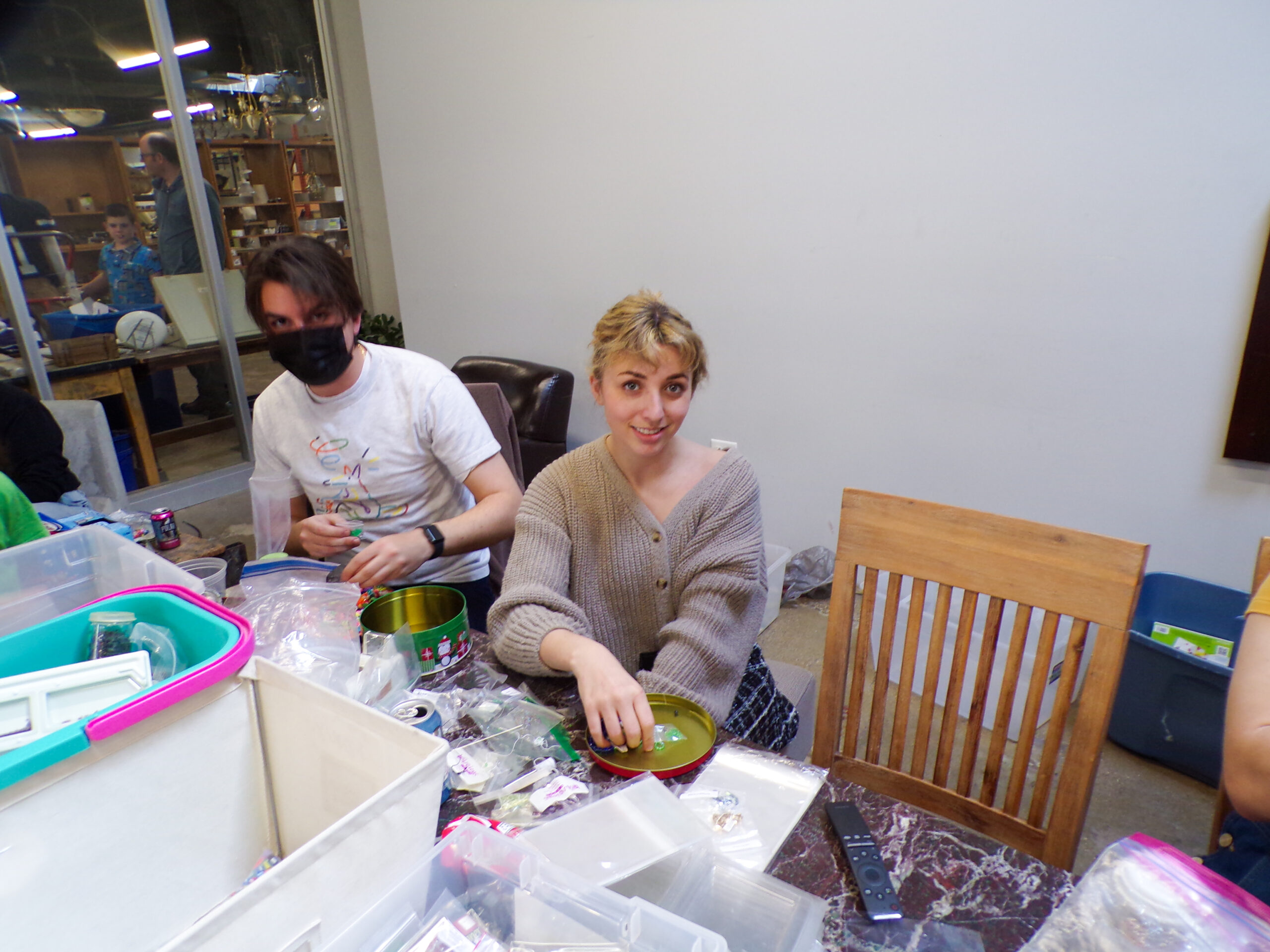At sunrise Nov. 7, Loyola students placed 7,057 miniature American flags around the west quad outside of Damen Student Center for Veterans Week. Before noon, the university requested their removal.
At sunrise Nov. 7, Loyola students placed 7,057 miniature American flags around the west quad outside of Damen Student Center for Veterans Week. Before noon, the university requested their removal.
“We got a call from a higher-up in the university,” student veteran Josh Jones said. “‘You’re gonna remove 6,000 flags and we’re only gonna give you this one little corner.’”
The “student-initiated” event primarily involved members of Loyola’s Military Veterans Student Services (MVSS) and Student Veterans of America (SVA). Student cadets of the Rambler Battalion, Loyola’s Army Reserve Officers’ Training Corps (ROTC), also assisted in setting up the flags.
Jones, also the SVA President and a former U.S. Marine, said the specific number of flags was chosen to represent the number of military members that have died in combat since 9/11.
Tobyn Friar is the assistant vice president for enrollment management and helps coordinate between the university and MVSS. He said the miscommunication lied in the fact that MVSS is an administrative office on campus.
“We really didn’t follow the appropriate steps from an office perspective,” Friar said. “There was a lot of back and forth, there was a lot of confusion, and honestly, it all came from our end.”
Friar said there are “very clear policies for students and what students have to do” when organizing events, but the university is not as “transparent” for departments such as MVSS.
Student groups must submit a form through LUCommunity and coordinate “at least two business days before installation,” according to the fixed exhibit clause of the university’s 2022-23 community standards.
The same time last year, approximately 250 American flags were placed around the quad. Neither MVSS nor SVA submitted a form, and they didn’t receive any pushback, according to MVSS Graduate Student Coordinator Carly Fournier.
“It was a much smaller scale, but now, all of the sudden, policies change and whatever,” Fournier, 27, said. “We take the hit on that.”
Matthew McDermott, associate director of external communications at Loyola, wrote in an email to The Phoenix that the flags’ “footprint had to be reduced.”
“The display was not properly requested by MVSS, and led to some functional concerns including weather and upkeep,” McDermott wrote. “There is also a waterline under West Quad – and the placement of sharp sticks in that area needed to be addressed.”
SVA Communications and Marketing Director Colin Andersen said this was the “first communication from the university in a long time.”
“Telling veterans to pull up a memorial display during Veterans Week doesn’t look good from a PR standpoint,” Anderson, an advertising and public relations major, said.
Andersen, who served in the U.S. Army from 2016 to 2021, said the groups had received “mostly words of support from senior members of administration,” and the only real reason they were given for their removal was sprinklers on the lawn.
“If we had blocked off a road, we would’ve understood,” Andersen said.
In addition to honoring those who died, the flags were set up in anticipation for the multiple Veterans Week events the MVSS and SVA had planned.
The events included a salute to service at Monday’s men’s basketball season opener, a women veteran leadership symposium in Damen Cinema Wednesday and an outdoor ceremony by the flagpole outside of Damen.
The area surrounding this flagpole was the only place MVSS and SVA were told they could keep their 4-by-6 inch flags.
“The Campus Reservations team was able to accommodate the placement of flags around the flag pole area to highlight Friday’s Veterans Day ceremony,” McDermott wrote. “Both departments were glad to find a solution that meaningfully honored our veterans.”
Fournier, who served in the U.S. Navy for eight years, said the size of the area they were relegated to was a “reflection” of how the university treats veterans at Loyola.
“They think that we’re just a rogue student organization, and this meant a lot more to us and to ROTC than the university would ever understand,” Fournier said.
Major Ross A. Wallace is the executive officer and assistant professor of military science for the Rambler Battalion. He said Jones had reached out to them to assist with placing the flags.
“We all have something in common and that is service to our country,” Wallace said.
Wallace was tasked with singing the national anthem at the Nov. 11 Veterans Day ceremony.
Jones and Fournier both spoke at the ceremony before President Mark C. Reed was introduced. In her speech, Fournier said Reed “has shown nothing but kindness and opened doors to conversation” for the student veteran organizations.
Reed began his speech noting the personal relevance this day has for him, as his father served as an officer and physician in the Army. He said his brother has also had a “lifelong career” as an infantry officer in the Army.
“It’s always an honor to be invited to speak at anything at the university,” Reed told The Phoenix. “But Veterans Day, in particular, is very special and it’s great to honor these very special students and others who have served our country.”
Reed was followed by Terry Prince, who Reed said was appointed by Gov. J.B. Pritzker as the acting director of the Illinois Department of Veterans’ Affairs in 2021. His department helps provide services for veterans and their families throughout the state of Illinois.
In his speech, Prince quoted one of his “favorite people,” Barack Obama.
“‘We acknowledge, humbly, that we can never serve our veterans at the same level that they served us,’” Prince said, quoting Obama. “‘But we can try. We can practice kindness. We can pay it forward.’”
He went on to emphasize the importance of resources for young veterans after they end their service.
“What happens many times, as I talked about, is people can get lost in the sea of opportunity far too often,” Prince told The Phoenix. “We need to make sure they understand what’s out there.”
This is also the primary goal of both the MVSS and SVA. Jones, 24, said the community these groups provide is so important because many of the veterans are older with families.
Despite this, he said the Loyola military community “doesn’t feel supported by the university.”
“We’re used to it,” Jones said. “Adapt and overcome, right?”












